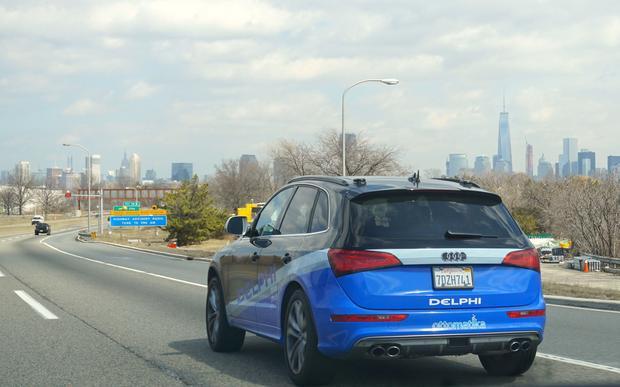Learn about brain health and nootropics to boost brain function
Essential Science: Neuroscience is aiding selfdriving cars

There are many projects underway to attempt to improve the navigation of self-driving vehicles. The answer to improved navigation could rest with neuroscience, in the form of special 'mapping' brain cells.
Improvements to autonomous cars, and robots with navigational systems designed to undertake location missions, could come down to the seemingly unlikely combination of rats, a box of Froot Loops, and a team of neuroscientists from Boston University. Smart rats, smart cars The study, sponsored by the U.S. Department of Defense, is seeking a better understanding of the brain's navigational system and then to apply this knowledge to develop smarter autonomous vehicles. The idea is to design a vehicle (or robot) navigation system that is capable of moving around obstacles as well as any living organisms.

File photo: Delphi took their self-driving Audi SQ5 on a 3400 mile road-trip across the US
Delphi
The researchers have found specialized brain cells which give rats a form of ‘personal map’ of their surroundings. It is quite probable that human brains possess the neurons as well, although this needs to be established by further study. Google map of the brain The research is based on exploring the hippocampus. Humans (and rats) have two hippocampi, and these form the limbic system, helping with the consolidation of information from short-term memory to long-term memory. This part of the brain is also important for the spatial memory that enables navigation.

Google Maps now lets you save areas for offline viewing while still supporting offline directions and navigation. The area in this image consumes around 375MB of space.
To work, this region of the brain stores maps of a person’s surroundings (a little like searching for a location on Google Maps). Keeping with the Google analogy, he team of researchers theorized that to effectively assess these neural maps the brain needs to convert the information to a "street-view" form. This is because humans need to mentally place themselves into something equivalent to ‘first-person view’. This means that to successfully navigate, people need to have an idea where the boundaries and landmarks are positioned in relation to ourselves. The theory appears to have been confirmed, based on new research findings. The nerve cells that help to form this ‘street-view’ appear to be located in an area deep in the brain that is associated with the control of behavior, called the striatum. This is a nucleus (a cluster of neurons) located in the subcortical basal ganglia of the forebrain. The striatum is part of the motor and reward systems. Research study

Hooded rats are just one of a number of different kinds of rats used in laboratory studies.
Jason Snyder
The evidence was gathered by placing electrodes into the brains of rats to assess what is happening. The equipped rodents were placed in an area containing strategically placed Froot Loops. The rats were then sent on a sugary scavenger hunt. As the rats sought out the sweets, it was noted that special brain cells within the striatum (egocentric boundary cells) were highly active. Furthermore, it was noted how these boundary cells activate in different ways as they help to guide the rats through the environment. This led to the conclusion that boundary cells in the striatum function as each rat's street-view map, sending out signals to a rat that they are near to a wall or other object. What these means for cars and robots The researchers are aiming for the findings to assist with improving autonomous navigation systems, so that computers can navigate effectively in complex environments. While robots are being used to automate activities in predictable environments, like warehouses, sending robots outside, especially on uneven terrain is much more challenging. A human can easily walk up and down a hill, a robot cannot. Self-driving cars will encounter similar issues on the road and on terrain. It is hoped that a deeper understanding of the brain's natural navigational system will offer clues for future high-tech solutions. Research paper The research has been published in the journal Nature Communications, with the study headed “Neuronal representation of environmental boundaries in egocentric coordinates.” Essential Science

This key experiment shows the successful protection of a phage-sensitive bacterial strain against a virus. Top-right - bacteria growing in the absence of a virus; Top-left - holes in the culture caused by an infecting virus; Bottom - when equipped with specific CRISPR defense system components, the bacteria became resistant to the virus.
John van der Oost
This article is part of Digital Journal's regular Essential Science columns. Each week Tim Sandle explores a topical and important scientific issue. Last week we looked at how variations to the gut microbiome are connected with anorexia, affecting how well a person can recover. The week before we reported how scientists have discovered the biggest seaweed bloom in the world. This is a record-breaking belt of brown algae, from West Africa to the Gulf of Mexico. It’s here to stay for the long-term, and this means ecological trouble.
| More about autonomous cars, selfdriving, Neuroscience, Rats, Location | |
| autonomous cars | |
Click here to view full article